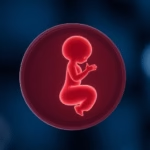Is Red Light Therapy Safe During Pregnancy?
Today we will be talking about red light therapy and its implications during pregnancy. Red light therapy involves the use of specific wavelengths of light to treat various conditions such as pain, inflammation, and skin disorders. The therapy is gaining popularity in different medical and wellness fields for its healing properties. During pregnancy, women often encounter numerous changes in their body and mind; thus, many may wonder about the safety of undergoing such treatments. In this blog post, we will explore various aspects of red light therapy, focusing specifically on its safety for pregnant individuals. We aim to provide a comprehensive overview, addressing common concerns and questions regarding this treatment modality during such a crucial time.
Understanding Red Light Therapy
Red light therapy (RLT) uses low-level wavelengths of red light, typically ranging from 600 to 650 nanometers, to stimulate cellular functions. The therapy works by promoting the energy production in cells through a process called photobiomodulation. This process can accelerate healing, reduce inflammation, and improve circulation, leading to benefits for various conditions such as acne, joint pain, and muscle recovery. Many people use RLT for beauty purposes as well, such as reducing wrinkles and improving skin texture. Given its increasing popularity, it’s essential to understand how it could potentially affect pregnant individuals.
1. The Mechanism of Red Light Therapy
The mechanism of red light therapy revolves around the absorption of light by cellular components, primarily the mitochondria, which are the powerhouse of the cell. When red light penetrates the skin, it stimulates the mitochondria to produce more adenosine triphosphate (ATP), leading to increased energy availability for cells. This boost can promote healing processes, enhance cellular regeneration, and reduce oxidative stress. The therapy represents a non-invasive treatment option, making it appealing for many seeking relief from health issues without medication. However, the implications during pregnancy can be complex due to changes in hormonal and metabolic profiles, raising questions about the therapy’s safety.
2. Safety of Red Light Therapy During Pregnancy
When considering any treatment, safety is paramount, especially during pregnancy. Currently, there is limited research specifically focusing on the safety of red light therapy for pregnant women. However, the existing literature suggests that RLT does not produce heat, which could harm the developing fetus. The non-invasive nature of the therapy makes it appealing as it avoids the use of pharmaceuticals or invasive procedures. Nonetheless, it is critical for pregnant women to consult their healthcare provider before starting RLT, as they can provide personalized recommendations based on medical history and existing conditions.
3. Benefits of Red Light Therapy
The benefits of red light therapy extend across several domains. Commonly reported benefits include improved skin health, reduced inflammation, increased wound healing, and pain relief. By enhancing circulation and cellular energy production, RLT can help combat fatigue, a common symptom experienced in pregnancy. Some studies suggest that women who utilize RLT for skin issues—such as acne or stretch marks—may find positive outcomes thanks to its regenerating properties. Still, adequate research in a prenatal context is limited, thus caution should prevail when considering these benefits during pregnancy.
4. Potential Risks and Considerations
Despite its perceived benefits, red light therapy may carry certain risks and considerations for pregnant individuals. One primary concern involves the lack of extensive research and clinical trials specifically targeting pregnant women. The hormonal changes occurring during pregnancy could result in different responses to RLT compared to non-pregnant individuals. Additionally, while RLT is generally safe, some individuals may experience skin irritation or discomfort after treatment. Therefore, it is crucial to monitor the body’s response to therapy and consult with health professionals regularly throughout the prenatal journey.
5. Alternatives to Red Light Therapy During Pregnancy
Pregnant women seeking relief from conditions that red light therapy addresses can explore several alternatives. These may include traditional treatments like physical therapy or acupuncture, which can also improve circulation and relieve pain. Non-invasive methods such as prenatal massages can help ease muscle tension and promote relaxation. Additionally, natural remedies, including herbal teas and essential oils, may offer beneficial properties for various pregnancy-related issues. Always discuss any treatment option with a healthcare provider to ensure it aligns with one’s health goals during pregnancy.
6. Consult Your Healthcare Provider Before Starting Therapy
Always consult your healthcare provider before integrating new treatments, including red light therapy, into your routine while pregnant. Your provider can offer a thorough assessment of your medical history, current symptoms, and any existing health conditions that might affect the decision to pursue therapy. Open communication with medical professionals can lead to a more informed choice, ensuring that you and your baby remain safe while addressing your needs effectively.
7. Combining Red Light Therapy with Other Treatments
For pregnant individuals considering red light therapy, combining treatments may yield better results. For instance, coupling RLT with gentle exercises like prenatal yoga can enhance blood flow and alleviate discomfort. Nutritional support, focusing on nutrient-rich foods, can also amplify the benefits of RLT by supporting overall well-being. Always gather comprehensive information and remain guided by health care providers when combining treatments to avoid unwanted complications.
8. Personal Insights and Experiences with Red Light Therapy
While scientific understanding is crucial, personal experiences and insights from pregnant women who have undergone red light therapy can offer valuable perspectives. Women have reported improvements in skin clarity and reductions in stretch marks after using RLT. However, individual responses can vary widely, and experiences are subjective. Sharing these insights within community forums or support groups can provide a broader understanding and perhaps help guide others facing similar decisions during their pregnancy.
9. Research and Future Implications
As red light therapy continues to gain popularity, the need for more focused research is imperative. Investigating the effectiveness and safety of RLT in pregnant populations will provide essential insights. Researchers can assess potential long-term effects and develop guidelines for safe practices during pregnancy. Ongoing studies may uncover new benefits or indicate necessary precautions, ultimately contributing to more individualized treatment plans in prenatal care contexts.
10. Summary of Key Points
To summarize, red light therapy offers various potential benefits, but its safety during pregnancy is not yet fully understood. The lack of extensive research and clinical trials in this specific demographic necessitates caution. Consulting healthcare professionals is crucial to ensure that any treatment pursued is safe and beneficial for both the mother and developing baby. Several alternatives exist, including traditional therapies and lifestyle modifications that might serve as effective options during this time. With more research, the future may provide clearer guidelines on the safe usage of RLT during pregnancy.
Conclusion
In conclusion, the safety of red light therapy during pregnancy remains a complex issue that demands further exploration. While the therapy shows promise in treating various health conditions, pregnant women should prioritize safety and consult their healthcare providers before embarking on any new treatment journey. The unique changes experienced during pregnancy can lead to different responses to therapies, making it essential to approach RLT with caution and awareness of individual health circumstances.
It’s also crucial to keep in mind the potential benefits that red light therapy can provide. The enhancement of skin health, reduction of inflammation, and improvement in circulatory responses may be especially appealing during this period. However, without sufficient clinical data tailored to pregnant women, many complexities remain. Therefore, exploring alternative treatments, lifestyle changes, and preventative measures can often provide safe and effective solutions that align with prenatal health requirements.
Finally, as research continues to investigate the efficacy and safety of red light therapy in pregnancy, prospective mothers can remain informed and equipped to make choices that reflect their personal health goals and well-being. Discussions around personal experiences and well-documented inquiries will support ongoing exploration, leading the way to potential advancements in therapeutic practices that keep the health of both mother and child as a primary focus.
Frequently Asked Questions (FAQs)
1. Is red light therapy completely safe during pregnancy?
While red light therapy is generally considered non-invasive and safe, there is limited research on its effects specifically during pregnancy. Always consult with a healthcare provider before undergoing treatment.
2. What are the benefits of red light therapy for pregnant women?
Potential benefits include improved skin health and reduced inflammation. However, effects can vary, and more research is needed to support these claims specific to pregnancy.
3. Are there any side effects of red light therapy for pregnant individuals?
While rare, some individuals may experience skin irritation or discomfort. Regular monitoring during treatment is advised, and any adverse symptoms should be communicated to a healthcare provider.
4. What are safe alternatives to consider instead of red light therapy during pregnancy?
Safe alternatives may include physical therapy, prenatal massages, and natural remedies with the approval of a healthcare provider.
5. How can one choose the right treatment during pregnancy?
Consultation with a healthcare provider is essential for developing a safe and effective treatment plan tailored to individual health needs and circumstances during pregnancy.
Further Reading
3.5 tog sleeping bag temperature guide
What Type of Psychotherapy Is Best for Anxiety?







